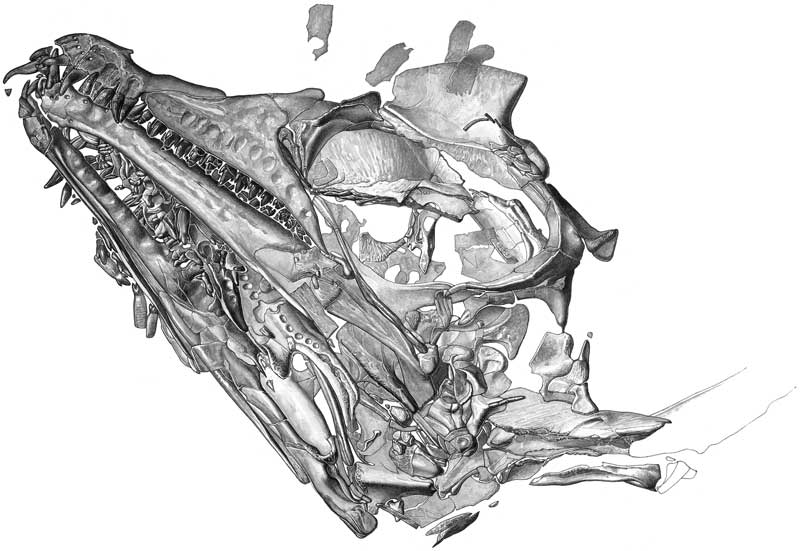
Stefania Nosotti and Tanystropheus (digital elaboration from an artwork by Fabio Fogliazza)
On November 22, 2007 the results of a thorough research by Stefania Nosotti, palaeontologist at the Museo di Storia Naturale di Milano, were presented in a press conference at the Museo di Storia Naturale, Milan (Italy).
These results were published in the journal “Memorie della Societą Italiana di Scienze Naturali e del Museo Civico di Storia Naturale di Milano”.
The monograph is entitled:
Tanystropheus longobardicus
(Reptilia, Protorosauria):
re-interpretations of the anatomy based on new specimens
from the middle Triassic of Besano
(Lombardy, Northern Italy)"
From the press release:
“A large marine reptile living 230 millions of years ago: a new portrait of Tanystropheus
150 years of paleontological research in Besano with the Societą Italiana di Scienze Naturali and
the Museo di Storia Naturale di Milano
A new portrait of Tanystropheus, one of the oddest Mesozoic reptiles, comes to life from new,
exceptionally well preserved specimens discovered during extensive excavations carried out
by the paleontologists from Museo di Storia Naturale di Milano and a group of volunteers
in the fossiliferous levels outcropping near Besano (Varese Province, northern Italy).
As an adult, Tanystropheus might reach 6 metres of overall length or even more. It featured a thin,
exceptionally long neck and, because of it, it was nicknamed “the giraffe-reptile”. The appearance
of this beast and the function, mobility and posture of the peculiar neck constituted a true riddle
for the paleontologists, since the times of the first discovery of its fossil remains.
According to the interpretation of the paleontologists from Museo di Storia Naturale di Milano,
Tanistropheus was a marine reptile seizing its preys in the warm tropical waters submerging Italy
in the Triassic, approximately 230 mya”.

I contributed with several illustrations and photographs to this important research - a particularly demanding job which took approximately three years - following the work in progress on the fossils and solving the problems related to
the iconography as required by the palaeontologist.
Here above, the illustration of a detail of Tanystropheus specimen MSNM BES SC 1018, representing
the exceptionally well preserved skull.
(length approximately 6 cm) (watercolour, 19 x 28 cm).